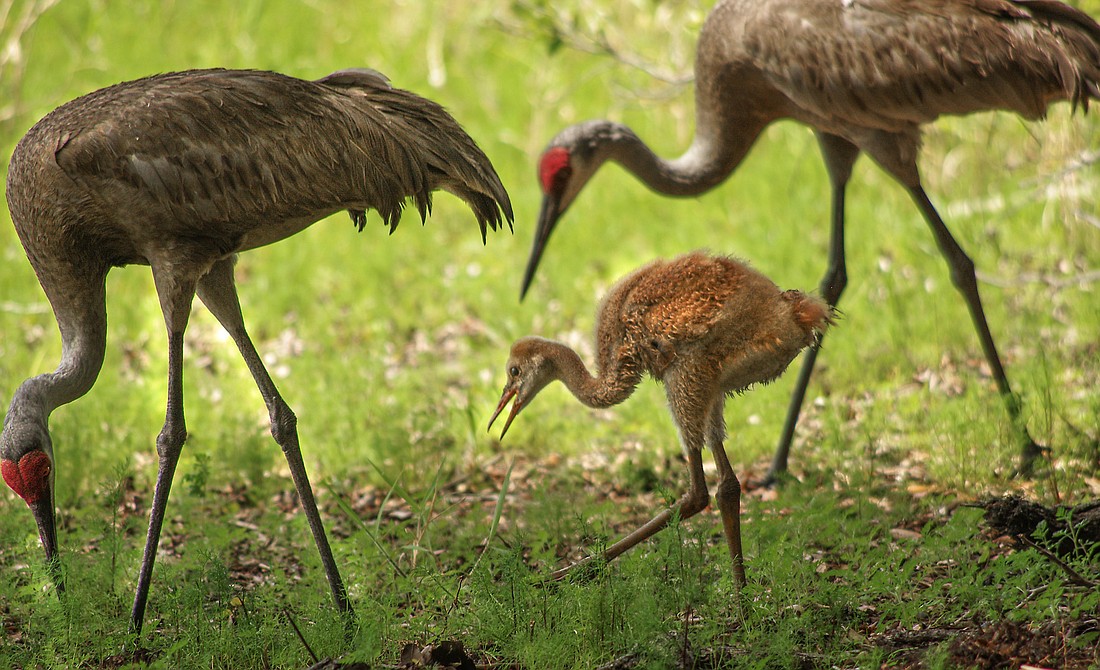- December 17, 2025
-
-
Loading

Loading

Nearly 4 feet tall, with a 6-foot wingspan, a bright red forehead and a call that can be heard from 2.5 miles away, Florida Sandhill Cranes are hard to overlook. Full-year residents, these majestic birds have long called Sarasota home: The earliest Sandhill Crane fossil, estimated to be 2.5 million years old, was unearthed in the MacAsphalt Shell Pit, now transformed into Benderson Park.
Sandhill Cranes mate for life, yearly building their plant-material nests together on the ground in isolated wetlands. Crane chicks are precocial; they hatch with down feathers, open eyes, and the ability to leave the nest within hours. At first, chicks peck food from their parents’ beaks, later learning how to probe for food on their own from their parents, who also teach them other crane essentials, such as dancing. Used primarily in courtship, juvenile cranes practice dancing for years before they select a mate.
A state-designated threatened species, loss of habitat due to wetland drainage and conversion of prairies for development and agricultural use are the primary threats to Florida Sandhill Cranes. Attracted to open settings, they are now present in many landscaped urban areas and suburban subdivisions.
Because mowed grass makes it easier to hunt for worms and insects, Sandhills are especially attracted to lawns, golf courses and roadsides. Cranes' legs are very fragile and are no match to a golf ball or a vehicle. And, unlike most birds, they will not fly away as a vehicle approaches. To help keep our Sandhill Cranes safe, please slow down and give them a chance to cross roads. And if you spot them on the golf course, please wait to tee off.
Save our Seabirds is a non-profit organization whose mission is to rescue and rehabilitate sick and injured birds, releasing as many as they can, while educating our community about avoiding injuries and preserving habitats.